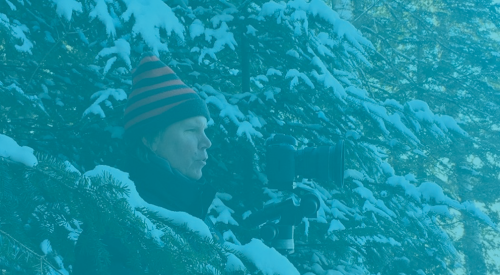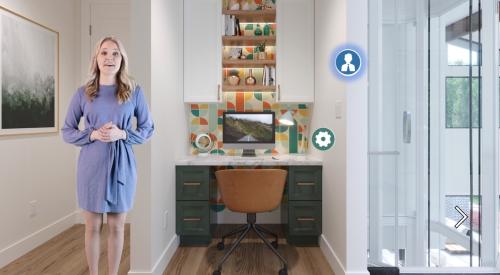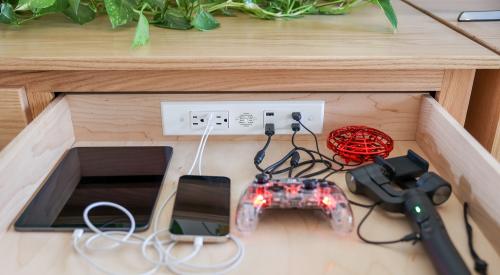The COVID-19 pandemic upended the way we live and work, thrusting us into a world of digital entertainment, socialization, shopping, and work almost instantaneously.
Many industries – including the AEC market – swiftly integrated new technologies and altered workflows to operate virtually. One tech innovation that rose in popularity during the pandemic was the use of 360-degree cameras to document jobsites and showcase completed projects via virtual tours.
The benefits of 360-degree photography
360-degree cameras, or omnidirectional cameras, utilize dual fisheye lenses to capture the entire environment around the camera in just one click, resulting in high-quality, immersive imagery and video. These compact cameras are easy to bring-on-the go and feature preset shooting modes and simple interfaces, making them ideal for photographers of any skillset.
Prior to the pandemic, 360-degree cameras were widely used for personal use to capture travel, outdoor adventures, or celebrations with family and friends. But as the world shifted digital, professionals also began to see the benefits of utilizing this technology in their work.
Let’s explore how architects, contractors, and interior designers integrate 360-degree cameras into their workflow and the benefits of utilizing these handy tools throughout the project from start to finish.
Surveying plots of land
Before breaking ground on a new project, Japan-based architect Waka Kimizuka surveys the plot of land using advanced 360-degree camera model, the THETA Z1. By attaching his camera to an extendable monopod, he can get a vantage point from a range of higher elevations to gauge various views, the angle of the sun, the position of the windows, and the surrounding landscape in the vicinity.
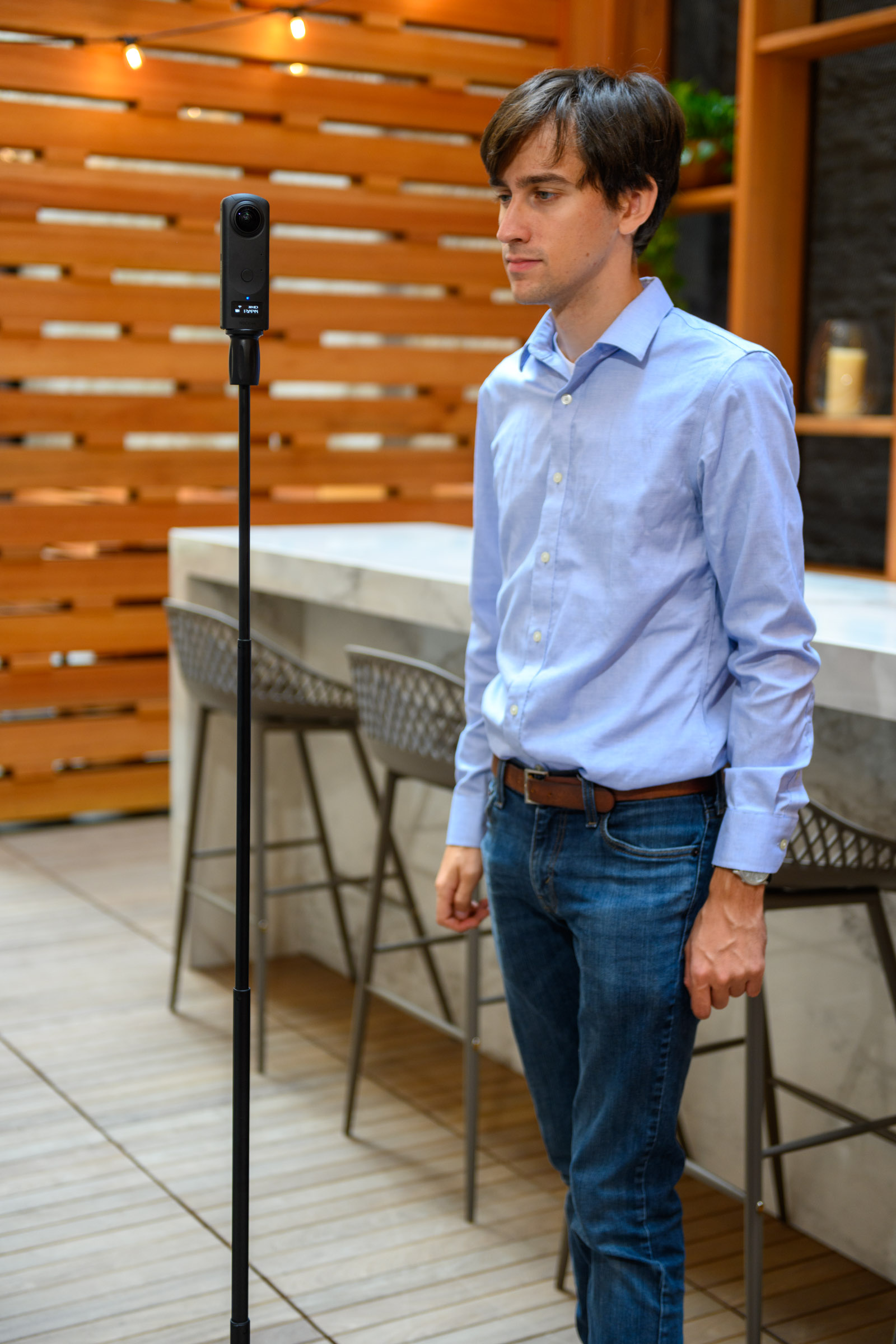
Documenting construction progress
Once the foundation is poured and construction begins, Franco Albarran, architect and founder of Texas-based Albarran Architects, finds 360-degree photography most helpful when documenting the pre-drywall cover phase of construction, when all the mechanical components in the walls and ceilings are exposed.
Photo by Franco Albarran - Spherical Image - RICOH THETA
He utilizes the THETA SC2 for Business, a mid-range model designed specifically for business use, to fully document mechanical components such as HVAC ducts, plumbing lines, and electrical wiring, in case they need to be serviced in the future. Knowing where these mechanical components are located prevents having to cut into drywall blindly or accidently nailing into them when hanging artwork, shelving, or televisions.
Prior to adapting 360-degree technology, Albarran used a digital camera or a cell phones to capture these images. “I found 2D cameras to be extremely limited in what they were able to document,” he says. “With a 360-degree camera, I can easily capture the floor, walls, and ceiling in one continuous scene and with high resolution –in just one click.”
Another challenge Albarran faces when shooting construction sites is lighting, as lighting is typically not yet installed in the pre-drywall phase. But the THETA SC2 for Business features the ROOM preset mode, which is an HDR mode that automatically compensates for the difference in brightness between interiors and exterior. Using this mode, Albarran was able to capture crisp, high-resolution images with ease.
Before and after: capturing renovations
When it comes to renovation work, Kimizuka leverages 360-degree imagery to assess the building’s structure. He first checks the structure of the building – typically from the attic or basement – to see if there are any columns that can be removed. He captures these areas with his THETA on a monopod or tripod so he can review later and confirm any changes that need to be made. He notes these areas can be tricky to shoot in, as they are often dark, but the THETA Z1 has a variety of settings and the ability to shoot in RAW, which produces images with more light and less noise. If using an older model, you can also achieve better lighting and photo quality by utilizing a portable light and selfie stick.
Post from RICOH THETA. - Spherical Image - RICOH THETA
Kimizuka notes that he prefers his 360-degree camera to a DSLR or smartphone because he is unable to capture everything in one image, meaning he could miss important design details. But with THETA, he can capture the full scene easily, so he can avoid making costly mistakes. 360 photos also provide a better sense of space. A regular camera requires multiple shots, making it difficult to tell the exact location the photo was taken from. With 360, it’s easy to review the entire space from one vantage point.
Mr. Onishi, a Japan-based contractor who uses his THETA camera for sign installations, said a feature he appreciates about his SC2 for Business is its ability to capture 360-degree images without anyone in the frame. The built-in Time Shift Shooting mode allows the photographer to shoot using only one lens at a time with a short delay, removing the need to hide and shoot remotely or with the self-timer mode. For Onishi, this is especially helpful because he can stay close to his camera, so he doesn’t have to worry about the camera and monopod toppling over in the wind since he often works outdoors.
Sharing progress and collaborating with teams
To help architects, contractors, and designers collaborate through all phases of a project life cycle, RICOH THETA developed a proprietary platform that digitizes the entire jobsite. RICOH360 Projects allows teams to upload, organize, and share 360-degree images taken at the jobsite into one seamless platform. Team members can then collaborate and make comments directly on the 360-degree images about changes that need to be made, ultimately reducing the number of trips taken to the site.
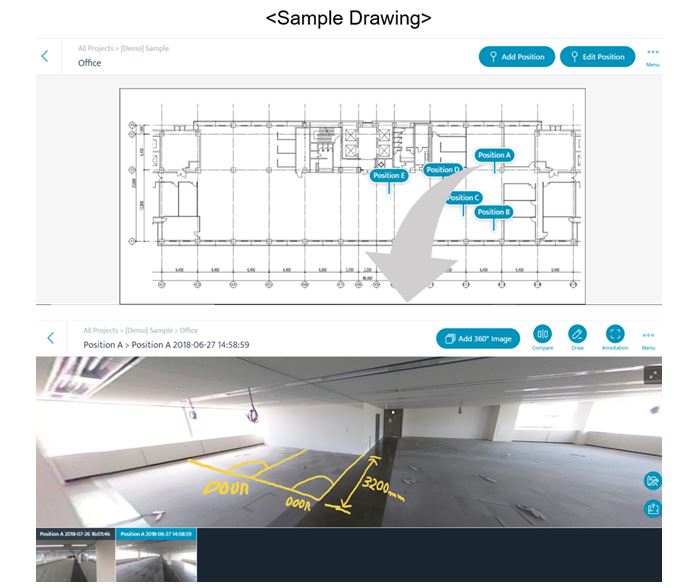
In addition, there are many other ways to share 360 images with free apps and services. RICOH THETA offers an official PC app (RICOH THETA for Windows and Mac) to view and share. Google services are also compatible with THETA and provide an easy platform for sharing.
Snapping interior spaces
Mami Misawa, a Japan-based interior designer, uses her THETA camera to showcase the interior spaces she decorates. Recently, she was tasked with decorating a retail store. One of the key design features was hanging dry flowers from the ceiling, which was challenging to capture using a regular camera. But Misawa placed the camera on a monopod and shelf and easily documented the entire vignette – even the high-hanging flowers.
Post from RICOH THETA. - Spherical Image - RICOH THETA
Misawa also designs spaces for special events such as weddings. Pre-event, she utilized her THETA to capture the blank space, which allowed her to revisit the space virtually and get a solid sense of the space as she made design choices. For example, when determining where to hang lights and curtains, she was able to look back at her shot and confirm the position of a rail that could hold them.
Misawa has limited time to make changes the day-of an event, so utilizing 360-degree photography allows her to plan and decorate in advance, improving overall efficiency and eliminating miscommunications. Keeping everyone on her team on the same page is also made easier with the ability to share 360 images easily through the THETA app.
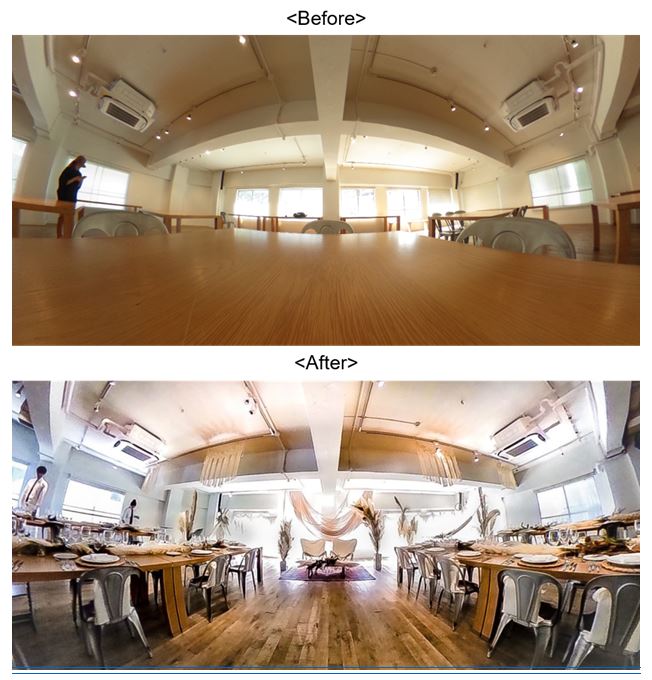
Showcasing completed projects
After construction is complete, it’s time to show off the project. 360-degree cameras can also be utilized to take immersive, high-resolution photos of the finished space, both inside and out.
For a fully immersive tour of finished projects, RICOH’s proprietary platform RICOH360 Tours allows professionals to easily create professional tours that allow current and prospective clients to virtually walk through the entire building.
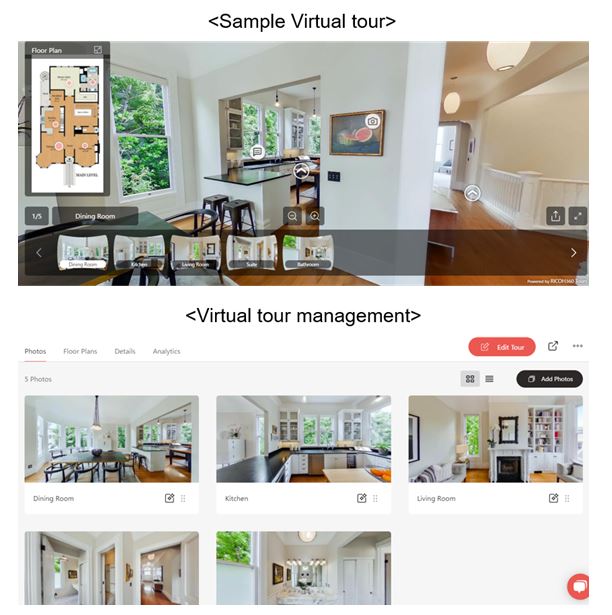
Easily edit images using the THETA+ app and upload to social media platforms or use in marketing materials.
For more on 360-degree photography and how it can be utilized for design work, visit theta360.com.

